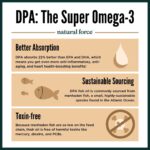Wood glue is a common adhesive used in woodworking projects, but concerns arise when it comes into contact with food. The question “Is Wood Glue Food Safe?” is crucial for anyone crafting items intended for culinary use. This article explores the safety aspects of wood glue, providing guidance on how to minimize risks and ensure your creations are safe for food contact.
The primary concern with wood glue stems from its liquid state, where it contains chemicals that are best avoided. Ingesting, inhaling, or otherwise consuming these chemicals directly from the bottle is certainly not recommended. However, the properties of wood glue change significantly once it “cures,” a process more complex than simple drying.
During curing, chemical reactions occur that stabilize reactive compounds. This often involves polymerization, where small compounds combine to form larger, inert structures. While not every reactive molecule participates in this process, most undergo reactions that render them less hazardous.
The key to safety lies in allowing the glue to dry thoroughly. Following drying, repeated washing of all surfaces with water and detergent is essential. Hot water is preferable if the item can withstand the heat. Vinegar can also be a beneficial addition to the washing process. It’s crucial to avoid using bleach unless disinfection is necessary, and even then, it should only be applied briefly before being thoroughly rinsed away. Never soak glue or wood in bleach.
Regarding specific products, Titebond II contains a small amount of N-methylolacrylamide, a potentially unpleasant chemical. This can be washed away if it’s not bound to the solidified glue or if it hydrolyzes, losing the methylol group. However, the remaining acrylamide also requires removal through thorough washing. Low-temperature baking, either in sunshine or in a warming oven after at least 24 hours of drying, can be a helpful step both before and after washing.
From an environmental perspective, it’s important to distinguish between 2-butoxyethanol and 2-butoxyethoxyethanol (glycol ether DB) and ethanol. These are distinct substances, with the glycol ethers being more toxic, albeit not extremely so. Their presence in wood glue is typically minimal, and they are readily broken down by soil bacteria or bacteria in sewage systems. Wastewater treatment plants utilize digesters to process trace chemicals effectively. This natural breakdown mitigates the environmental impact of these compounds, contrasting with the consequences of irresponsible dumping of larger quantities.
When butoxyethanol decomposes through bacterial action, the resulting products include carbon dioxide (a negligible amount compared to human respiration) and potentially formaldehyde, which further oxidizes into CO2 or is absorbed by bacteria to produce folic acid. Another byproduct is butanol, similar to ethanol but more toxic, which is also easily degraded into CO2 or acetic acid (vinegar).
Therefore, regardless of the type of wood glue used, thorough drying and washing are paramount. You can also trust that any remaining trace amounts will be taken care of by microscopic organisms.
In conclusion, while wood glue contains chemicals that can be harmful in their liquid state, the curing process, combined with proper drying and washing, significantly reduces the risks. By following these precautions, you can confidently create woodworking projects that are safe for food contact.
